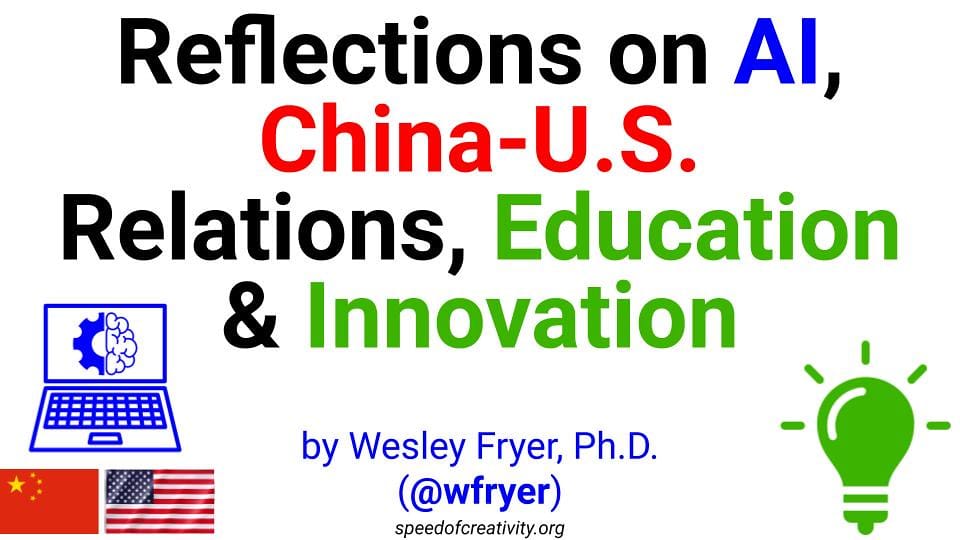The AI Revolution in American Classrooms: How Teachers Are Embracing Technology to Transform Education
A quiet revolution is transforming American classrooms, and it's happening behind the scenes where lesson plans are crafted and tests are graded. Recent surveys indicate that over 60% of K-12 teachers across the United States are now integrating artificial intelligence tools into their daily workflows, fundamentally changing how education is delivered to millions of students.
The Numbers Tell the Story
According to a comprehensive study by the EdWeek Research Center, 58% of teachers report using AI for lesson planning, while 41% have adopted AI-powered grading systems. This represents a dramatic shift from just two years ago, when fewer than 15% of educators reported any regular AI usage. The adoption rate has accelerated particularly in the wake of ChatGPT's mainstream breakthrough, with teacher AI usage increasing by over 300% since early 2023.
The trend spans across all grade levels, though high school teachers lead adoption at 67%, followed by middle school educators at 61%, and elementary teachers at 54%. Geography plays a role too—urban districts show higher adoption rates (65%) compared to rural areas (48%), largely due to infrastructure and training resource availability.
Streamlining Lesson Planning
For many teachers, AI has become an invaluable brainstorming partner. Sarah Martinez, a fifth-grade teacher in Austin, Texas, describes her experience: "I can input my learning objectives and get three different lesson plan frameworks in minutes. It doesn't replace my creativity, but it gives me a foundation to build on and saves me hours each week."
Teachers are using AI tools like ChatGPT, Claude, and education-specific platforms such as Teacherbot and Planit Teachers to:
- Generate discussion questions aligned with curriculum standards
- Create differentiated activities for various learning levels
- Develop assessment rubrics
- Brainstorm creative project ideas
- Adapt content for students with special needs
The time savings are substantial. Where lesson planning once consumed 8-12 hours per week for many teachers, AI assistance has reduced this to 4-6 hours, freeing up time for student interaction and professional development.
Revolutionizing Assessment and Feedback
Perhaps even more transformative is AI's impact on grading and assessment. Traditional paper grading has been supplemented—and in some cases replaced—by AI systems that can evaluate student work with remarkable sophistication.
Modern AI grading tools can assess not just multiple-choice questions but also essays, showing work in math problems, and even creative writing assignments. These systems provide:
- Instant feedback on grammar, structure, and content
- Consistent scoring based on predetermined rubrics
- Detailed analytics on student performance patterns
- Personalized suggestions for improvement
James Chen, a high school English teacher in Seattle, notes: "The AI doesn't just grade—it helps me identify patterns I might miss. It can spot when a student is struggling with specific concepts across multiple assignments and suggest targeted interventions."
Addressing Concerns and Challenges
Despite widespread adoption, the integration of AI in education isn't without controversy. Privacy concerns top the list, as sensitive student data flows through AI systems. Many school districts are implementing strict guidelines about which AI tools can be used and how student information is protected.
There are also concerns about over-reliance on technology. Critics worry that AI-generated lesson plans might lack the personal touch and cultural sensitivity that experienced teachers bring to their classrooms. Additionally, the digital divide becomes more pronounced as schools with better technology access gain advantages.
Professional development remains a challenge. While 73% of teachers express interest in learning more about AI tools, only 31% report receiving formal training from their districts. This gap has led to inconsistent implementation and missed opportunities for maximizing AI's benefits.
The Path Forward
The integration of AI in K-12 education appears irreversible, but success depends on thoughtful implementation. Leading school districts are developing comprehensive AI policies that balance innovation with privacy protection, while investing in teacher training and digital equity initiatives.
As AI technology continues evolving, its role in education will likely expand beyond lesson planning and grading to include personalized learning pathways, predictive analytics for student success, and even AI tutoring systems.
The classroom of tomorrow is taking shape today, with teachers leading the charge in determining how artificial intelligence can best serve educational goals. The key lies not in replacing human judgment and creativity, but in augmenting them with powerful tools that make quality education more accessible and effective for all students.

